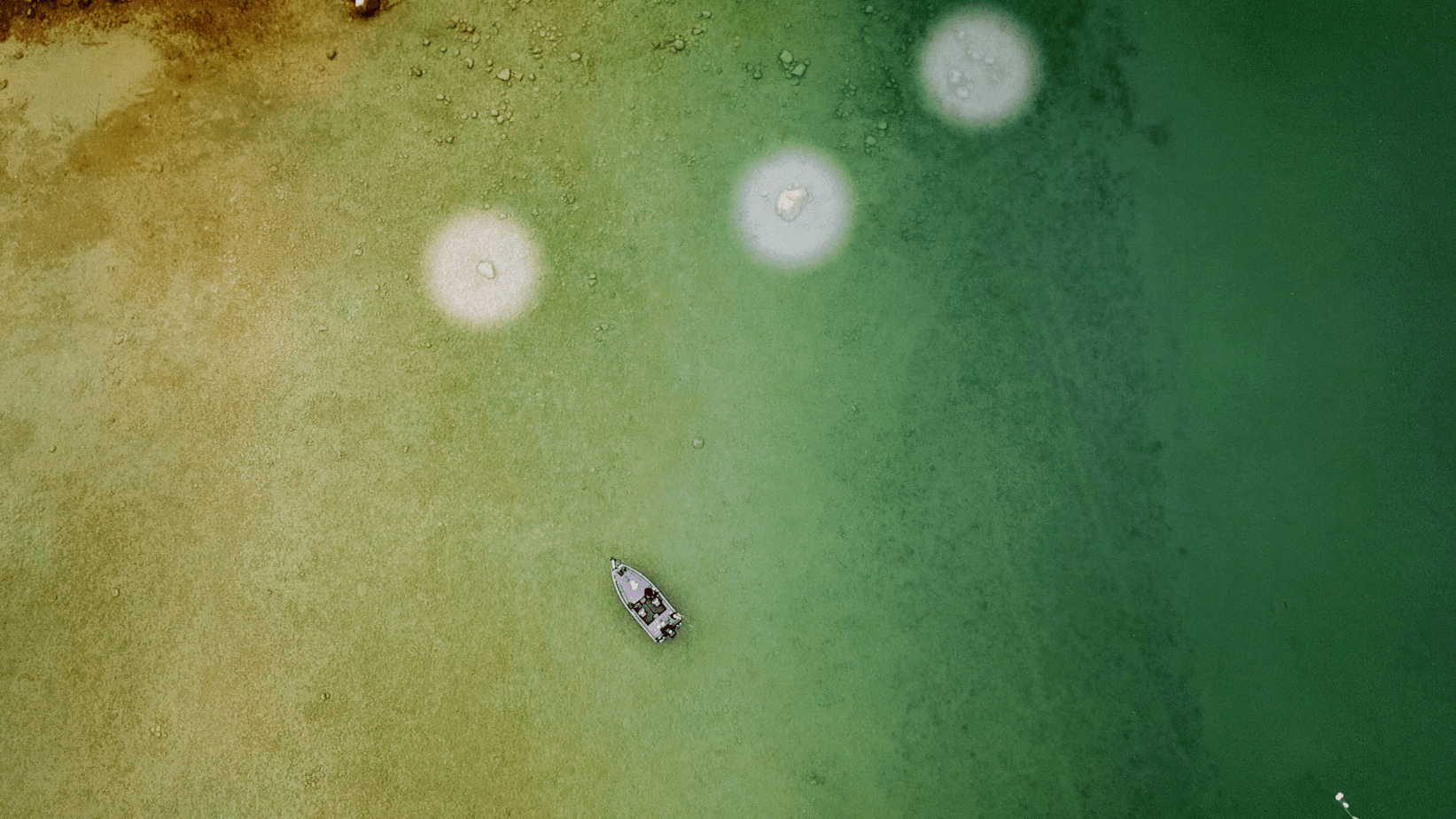The Great Lakes are a gold mine for excellent smallmouth bass fishing, especially during the springtime months when smallmouth are in the shallows chasing forage and participating in the spawn. In this video, James Lindner talks about a few awesome smallmouth spots on the Great Lakes, as well as some excellent presentations you should try on your next smallmouth trip.
In this article, we will discuss the best areas to find smallmouth bass in the early season on the Great Lakes. Smallmouth fishing is generally associated with large shallow rock rubble and sand flats, typically found in depths ranging from four to fifteen feet of water. Smaller wind-protected bays tend to concentrate brown bass in the early spring when the water temperature is in the 40s. As the water temperature rises into the 50s, main lake flats will also see schools of fish.
Wind plays a significant role in smallmouth fishing on the Great Lakes. It can dramatically affect water temperature and fish movement. When the wind blows into bays and flats, it brings fish in. On the other hand, offshore winds will suck in cold water and push fish out.
Using Side Imaging to Locate Fish
One effective technique for finding smallmouth bass on the flats is using side imaging technology. By driving around with side imaging on, you can isolate the biggest boulders on the flats that the fish tend to gravitate towards. These large rocks serve as key spots where the fish will move in when they move up onto the flat. Spending time to locate these structure features is crucial for success.
When using side imaging, look for the largest boulders on the flats and mark them as waypoints. These waypoints will serve as reference points for casting and targeting the fish. Spend time driving around the flats, identifying the best spots with the biggest rocks. Once you have located these key areas, you can cast right through those coordinates and increase your chances of catching smallmouth bass.
Targeting Subtle Depressions
In addition to targeting the large boulders, it’s also important to pay attention to subtle depressions on the flats. These depressions can be identified by their different colors. Turquoise-colored areas indicate shallow depressions, while lighter sandy-colored spots indicate shallower areas. Look for deeper depressions that appear turquoise and pitch your bait into those locations.
Hotspots for Smallmouth Bass on the Great Lakes
While we are currently fishing on Grand Traverse Bay of Lake Michigan, there are several other hotspots for smallmouth bass around the Great Lakes. Some of these include:
- Lake Superior
- Chequamegon Bay
- Lake Michigan
- Sturgeon Bay in Door County Peninsula, including Washington Island
- Big Bay and Little Bay de Noc in Lake Huron
- Saginaw Bay in Lake Huron
- Lake Erie (both eastern and western basins)
- Lake Ontario, including Henderson Harbor and Chaumont Bay
Trophy Hunting for Big Smallmouth Bass
When it comes to trophy hunting for big smallmouth bass in the Great Lakes, the approach is quite different from largemouth bass fishing. Instead of using big swimbaits, baitcasters, and heavy line, the key is to keep it simple and use spinning rods with tiny baits.
In clear water environments, smallmouth bass in the early season are more likely to be attracted to smaller baits. Baits that are 2 to 3 inches in size are considered large for smallmouth bass fishing in these conditions. Some effective baits for trophy hunting big smallmouth bass include tubes, swimbaits, and little hair jigs.
The reason for using smaller baits is that the fish are just coming out of their wintering areas and may still be a bit lethargic. A slow presentation is key to enticing these fish. Cast your bait in front of them and retrieve it slowly. This method allows you to target the fish effectively and increase your chances of hooking into a trophy-sized smallmouth bass.
Conclusion
Early season smallmouth bass fishing on the Great Lakes can be incredibly rewarding. By targeting the right areas, such as large shallow rock rubble and sand flats, and paying attention to wind patterns and water temperature, you can increase your chances of success. Using side imaging technology to locate key spots, such as large boulders, and targeting subtle depressions on the flats can also improve your fishing experience. Remember to keep it simple when trophy hunting for big smallmouth bass and use smaller baits with a slow presentation. With these tips in mind, you’ll be well on your way to catching some whopper brownies on the Great Lakes.










